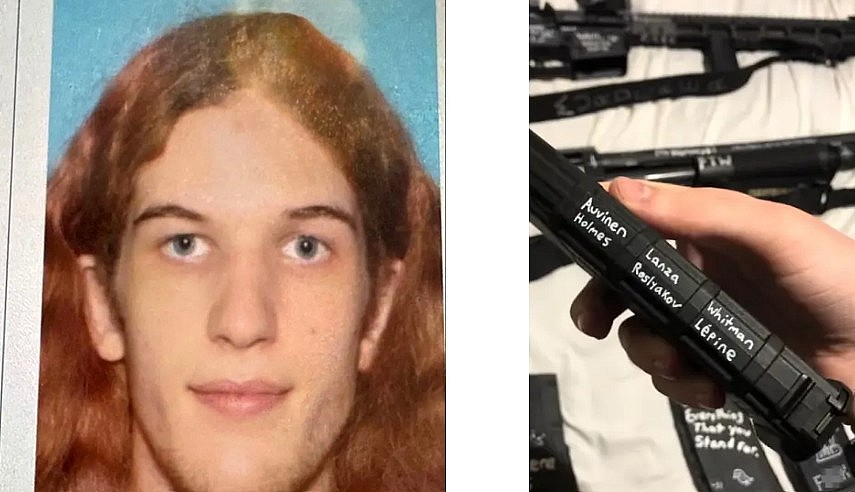Who Was Robin Westman? Inside the Mind of the Minneapolis Mass Shooter
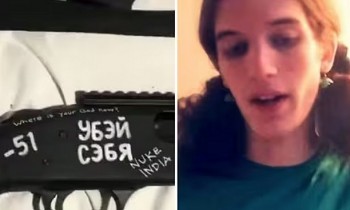 Minneapolis School Shooting: What Her Yearbooks and Home Address Reveal Minneapolis School Shooting: What Her Yearbooks and Home Address Reveal Inside the dark spiral of a troubled former student whose past may hold clues to a tragedy. |
On the morning of August 27, 2025, Robin Westman, a 23-year-old former student of Annunciation Catholic School in Minneapolis, opened fire inside the church attached to her childhood school. The attack left two children dead and 17 others injured. It was over in minutes — but the aftermath is only beginning.
Authorities are investigating the massacre as a potential domestic terror attack and anti-Catholic hate crime. The shooter’s past, her troubled mental state, and her eerie digital trail paint a chilling portrait of a person unraveling in silence.
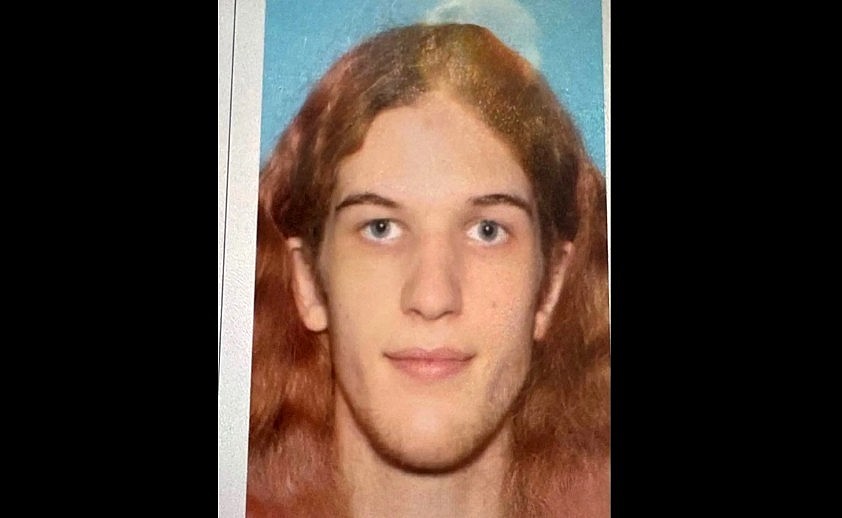 |
| Robin Westman murdered 2 students in the shooting |
The Shooter: Who Was Robin Westman?
Robin M. Westman was born Robert Paul Westman on June 17, 2002, and grew up in Richfield, Minnesota, a quiet suburb just south of Minneapolis.
In 2020, at age 18, she legally changed her name and gender identity, transitioning to female. According to court records, her mother filed for the name change, noting Robin "identifies as a female and wants her name to reflect that."
Despite the name and gender change, those who knew her say Westman struggled with identity, mental health, and feelings of deep alienation.
-
Age: 23
-
Hometown: Richfield, MN
-
Former Student: Attended and graduated from Annunciation Catholic School, the very site of the massacre
-
Occupation: Recently employed, described by a neighbor as excited about her new job
-
Weapons Used: Legally purchased rifle, shotgun, and handgun
Family, Upbringing, and School Ties
Westman’s life was deeply entwined with the school she later attacked.
-
Mother: Mary Grace Westman, worked as the parish secretary at Annunciation from 2016–2021
-
Father/Siblings: Not publicly identified. Family has not spoken to media.
-
Neighbors: One neighbor described Robin as recently upbeat, recalling she “went climbing” and seemed “happier than usual” just two weeks prior.
Multiple sources confirm Robin’s strong emotional connection — and possibly unresolved trauma — linked to the school and church community where she was once a student.
The Attack: What Happened on August 27
At 8:30 a.m., as Mass began inside the school’s church, Westman parked nearby and began firing from outside, shattering stained-glass windows.
She then entered the building, armed with three firearms, and opened fire on students and elderly parishioners attending the service.
-
Fatalities: Two children, ages 8 and 10, were killed
-
Injured: 14 children, 3 elderly adults (ages 75–85)
-
Tactics: Westman barricaded doors, set traps to delay emergency response, and eventually took her own life in the church parking lot
-
Response time: Police arrived within 4 minutes, minimizing further loss of life
Trans Shooter in Minneapolis Attack Left Disturbing Political Messages, Including Threat Against TrumpThe Minneapolis school shooter has been identified as Robin Westman, a 23-year-old transgender woman with a disturbing digital trail and a personal history riddled with signs of isolation and deteriorating mental health. Investigators revealed that among the materials found after the attack was a disturbing handwritten note referencing a desire to “kill Trump,” alongside other violent and politically charged sentiments. According to law enforcement sources, the shooter had no prior criminal record, and all three firearms used in the attack — a semi-automatic rifle, a shotgun, and a handgun — were legally purchased in the past year. However, what raised immediate red flags for investigators was the ideological content of Westman’s digital footprint. In multiple pre-scheduled social media posts and YouTube videos — now removed — Westman alluded to violent political fantasies, referenced notorious mass shooters, and displayed hate speech directed at political figures, religious communities, and ethnic groups.
The mention of “kill Trump” in her writings was particularly chilling, as it pointed to an escalation from internal rage to outward-directed political violence. The note appeared in a section that also referenced historical and contemporary political grievances, including anti-police rhetoric and support for past mass shooters. Federal officials are investigating whether these writings constitute a manifesto or were simply part of a broader pattern of mental instability and delusion. However, experts caution against reducing the entire motive to a political ideology. Mental health professionals analyzing the case say the evidence suggests Westman was suffering from delusional thinking, including false beliefs that she was dying from cancer, and long-term suicidal ideation. “What we’re looking at is someone who was deeply disturbed and expressing that through violence. The political slogans, as horrific as they are, may have served more as an outlet for her rage than a clear ideological motive,” one analyst noted. Still, the inclusion of politically incendiary language has fueled a wave of partisan reaction, particularly from far-right commentators who have seized on Westman’s transgender identity and anti-Trump messages to claim the attack was politically motivated. Social media platforms are already flooded with misinformation, prompting calls for responsible reporting and restraint until the full picture emerges. For now, investigators are working to decipher the writings, digital materials, and timeline leading up to the attack — hoping to understand not just what happened, but why. |
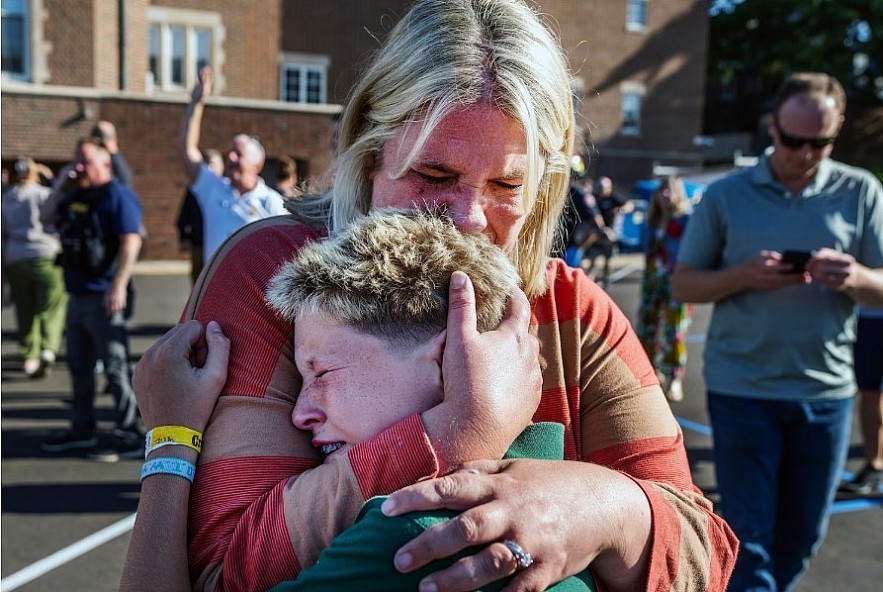 |
| Minneapolis shooting: 8-year-old and 10-year-old killed, 17 others hurt at Catholic school |
Motive: Hate, Delusion, or Despair?
While no clear manifesto was left, evidence found at the scene and online points to a disturbing mix of personal despair, hatred, and self-destruction.
Found at the Scene:
-
A 4-page handwritten letter to friends and family, expressing depression, terminal illness delusions, and calling herself a “horrible monster”
-
Reference to “having cancer” and believing she had “nothing left to live for”
-
Detailed plans for the attack, revealing months of preparation
Online Footprint:
-
A YouTube channel, deleted shortly after the attack, hosted videos in which she:
-
Referenced notorious mass shooters (e.g., Adam Lanza, Brenton Tarrant, Anders Breivik)
-
Displayed weapons marked with hate speech, including slurs and phrases like “Kill Donald Trump”
-
Showed drawings of churches under attack, and expressed anti-religious, anti-Semitic, and racist ideologies
-
The FBI has not ruled out religious hate as a primary motive.
Mental Health: A Spiral Into Violence
Though Robin had no criminal history, investigators believe she had long battled mental illness, particularly severe depression and delusional thinking.
Friends (now in hiding) described Robin as socially withdrawn. Neighbors say her demeanor shifted dramatically in recent months.
Key points:
-
No documented history of psychiatric treatment
-
Claimed to be dying of cancer — no medical record supports this
-
Expressed suicidal thoughts for years, according to her final letter
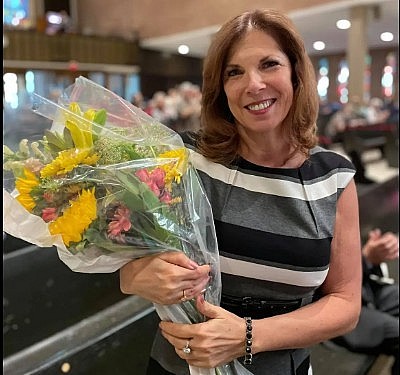 |
| Mary Grace Westman worked at the school where the shooting occurred |
Public Reaction: Pain, Politics, and Polarization
Law Enforcement:
-
The FBI is treating the shooting as domestic terrorism and an anti-Catholic hate crime
-
Investigators are analyzing devices, online posts, and home surveillance footage
Political Response:
-
Governor Tim Walz: “This was evil, plain and simple. Our schools and our children are not battlegrounds.”
-
Mayor Jacob Frey: Warned against politicizing Westman’s gender identity, stating, “The focus must remain on the victims.”
Right-Wing Figures:
-
Commentators like Matt Walsh and Marjorie Taylor Greene immediately seized on Westman’s transgender identity, framing it as the cause of the violence.
-
This prompted backlash from LGBTQ+ advocates, who argue mental illness — not identity — was the root issue.
Aftermath: Healing and Justice
In the wake of the tragedy, Minneapolis has come together to mourn and support the victims.
-
Vigils: Hundreds gathered outside Annunciation Church, leaving candles, notes, and prayers
-
School Status: Classes have been suspended indefinitely; grief counselors are working with students
-
Legal Fallout: Gun store owners and online platforms linked to Westman’s purchases are being investigated
Meanwhile, the conversation around gun access, mental health support, and online radicalization has intensified.
What Happens Next?
Ongoing Investigations:
-
The FBI is tracking down anyone who may have interacted with Westman online
-
All digital communications and hard drives are being examined for accomplices or signs of radicalization
Policy Debates:
-
Local leaders are calling for stricter background checks, red flag laws, and more comprehensive mental health screenings
-
Religious institutions are reevaluating security protocols during services
Final Thoughts
Robin Westman’s story is a collision of unresolved trauma, untreated mental illness, online radicalization, and easy access to firearms. What began as personal pain ended in public tragedy. As Minneapolis buries its dead and begins to heal, a grim question remains:
How many more lives will be lost before warning signs become action?
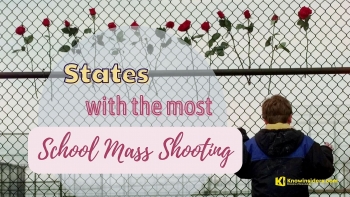 Top 10 States With The Most School Mass Shootings In the U.S Top 10 States With The Most School Mass Shootings In the U.S School shootings are tragic events that cause death and injury in places of learning that are supposed to be safe havens. The top 10 states ... |
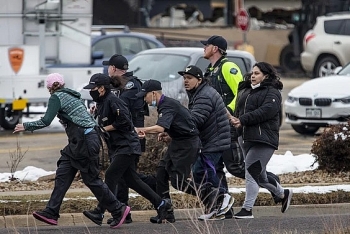 Why Are There Many Mass Shootings in the USA? Why Are There Many Mass Shootings in the USA? The US has a large number of guns that are readily available for purchase, and this is thought to be the primary cause of the ... |
 Mass Shootings in the U.S: Understanding the Causes, History, and Safety Measures Mass Shootings in the U.S: Understanding the Causes, History, and Safety Measures The United States, a country with some of the most permissive gun laws in the world, experiences a higher frequency of mass shootings compared to ... |
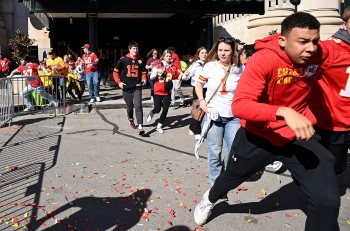 How Many Mass Shootings in the U.S in 2024? How Many Mass Shootings in the U.S in 2024? Gun violence continues to plague the United States, with mass shootings becoming an almost daily occurrence in 2024. How many incidents have we faced? What ... |
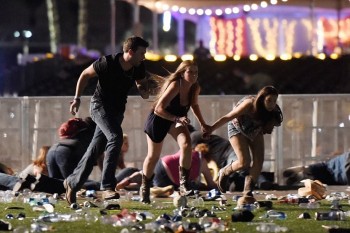 List of 39 Mass Killings in the U.S for A Year List of 39 Mass Killings in the U.S for A Year At least 170 people have been killed in at least 39 mass killings in the United States in 2024. |

